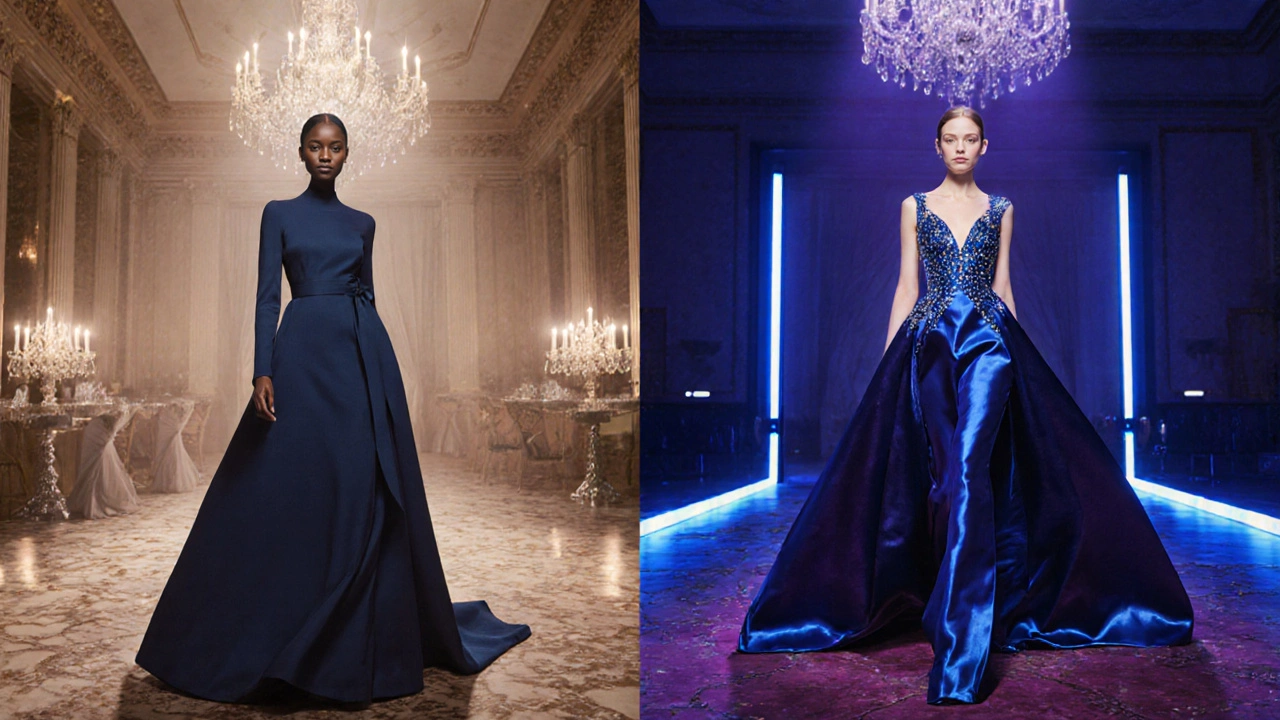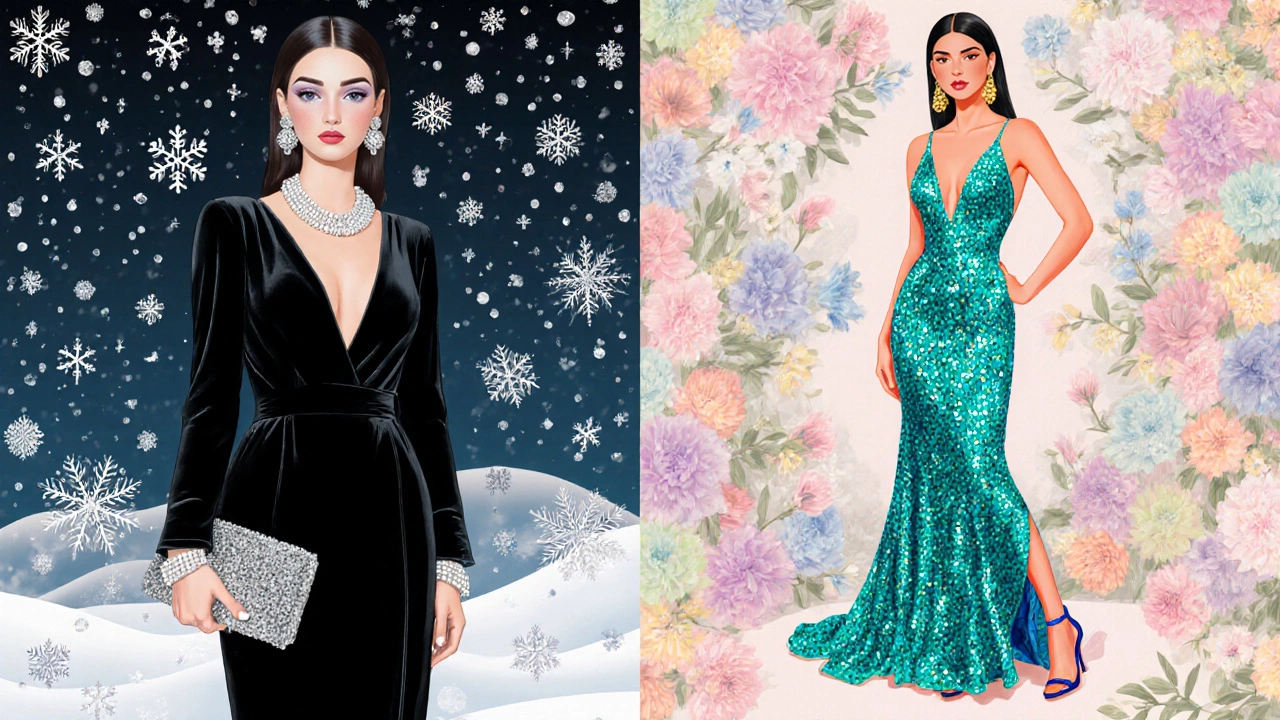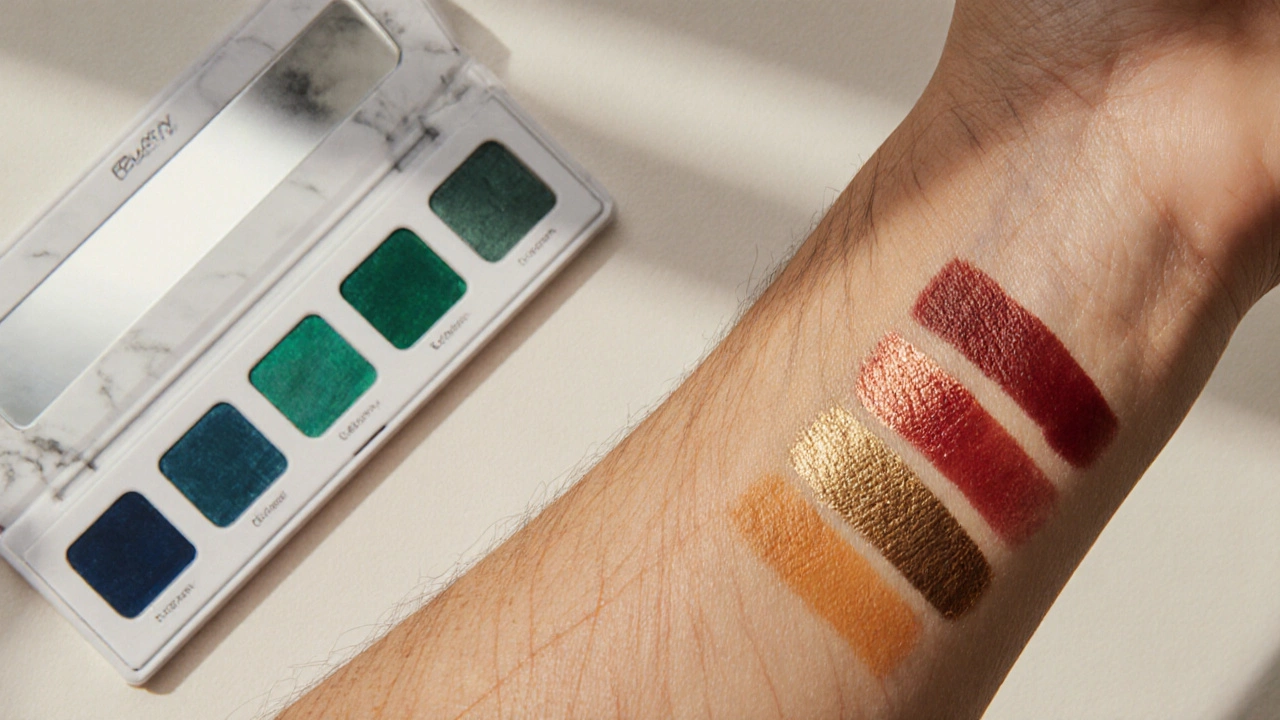Key Takeaways
- Match the dress hue to your skin tone: cool tones shine in blues and emeralds, warm tones glow in reds and golds.
- Consider the lighting: candlelight favors deep jewel tones, while bright venue lights work well with metallics.
- Season matters - winter evenings suit icy silvers, spring evenings welcome soft pastels.
- Fabric finish (matte vs. sheen) changes how a color reads under different lights.
- Pair the chosen hue with complementary accessories and makeup for a cohesive look.
What Makes an Evening Dress the Right Color?
Choosing the perfect evening dress color isn’t a lottery; it’s a mix of science, style, and personal preference. The right shade can accentuate your features, harmonize with the venue, and keep you feeling confident all night long. Below we break down the five main factors that drive the decision.
1. Identify Your Skin Tone
Skin tone falls into three broad categories: cool, warm, and neutral. The easiest test is to look at the veins on your wrist. Blue or purple veins point to a cool undertone; green veins suggest warm; a mix means neutral.
Cool undertones glow in blues, purples, emeralds, and icy silvers. Warm undertones sparkle in reds, oranges, golds, and earthy browns. Neutral skin can pull off most shades but often looks striking in teal or soft pink.
Knowing this helps you filter the sea of color options instantly.
2. How Event Lighting Shapes Color Perception
Lighting is the silent influencer of every outfit. Candlelight and dim chandeliers deepen hues, making dark jewel tones appear richer. Bright LED or daylight‑balanced lighting can wash out subtle shades, pushing you toward brighter or metallic finishes.
Ask the venue about the main light sources. If the event is outdoors with string lights, consider how the warm glow will interact with your fabric’s sheen.

3. Seasonal Influence on Evening Dress Colors
Even though the event is in the evening, the season still matters. Winter evenings pair naturally with icy blues, deep burgundy, and sleek black. Spring evenings welcome blush pinks, lavender, and soft mint. Summer evenings thrive on coral, turquoise, and sunny gold. Autumn evenings feel at home with burnt orange, olive, and mustard.
Seasonal palettes keep your look feeling timely rather than out‑of‑season.
4. Fabric Type and Finish
Matte fabrics like crepe or cotton absorb light, muting color intensity. Shimmering fabrics such as satin, silk, or sequined chiffon reflect light, amplifying hue vibrancy. A matte navy dress will look subtle under candlelight, whereas a satin navy will glow.
When you pick a fabric, think about the venue’s lighting and the overall mood you want to convey.
5. Classic Timeless Colors vs. 2025 Trendy Hues
Fashion cycles bring fresh shades every year, but classics never go out of style. Below is a quick side‑by‑side look at the two camps.
| Attribute | Classic Colors | 2025 Trendy Colors |
|---|---|---|
| Timelessness | High - rarely feels dated | Medium - may shift next season |
| Best for Cool Skin | Navy, Emerald, Royal Blue | Electric Indigo, Neon Teal |
| Best for Warm Skin | Ruby Red, Gold, Deep Burgundy | Burnt Saffron, Coral‑Orange |
| Lighting Compatibility | Works in both low‑light and bright venues | Shines best under bright or colored LED |
| Accessibility (Retail) | Widely available across price points | Limited to boutique collections |
If you want an outfit that will still look great years from now, stick with classics. If you love making a statement and don’t mind the trend shifting, try a 2025 hue.

6. Building a Cohesive Look: Accessorizing
Accessories should echo your dress color without competing. For a cool‑tone navy dress, silver jewelry, sapphire earrings, and a navy clutch create harmony. For warm‑tone coral, opt for gold bangles, rose‑gold heels, and a matching lipstick.
Makeup follows the same rule: choose a lip shade that mirrors a key accent color, and keep eye makeup complementary rather than clashing.
7. Common Pitfalls to Avoid
- Over‑matching: Wearing every piece in the exact same hue can look flat. Add texture or a contrasting accent.
- Ignoring venue lighting: A dress that looks stunning in daylight may turn muddy under dim lights.
- Choosing purely trendy shades for a formal gala: Trendy colors can work for cocktail parties but may feel too casual for black‑tie events.
- Neglecting personal comfort: If a color makes you self‑conscious, it will show in your posture.
Quick Decision Checklist
- Determine your skin undertone (cool, warm, neutral).
- Ask the host about the main lighting style.
- Identify the season of the event.
- Choose fabric based on desired sheen.
- Select a color: classic for timeless, trendy for statement.
- Plan accessories and makeup to complement the hue.
- Try the full look in similar lighting before the event.
Frequently Asked Questions
Can I wear black to an evening event?
Black is a safe classic, but it can appear harsh under low lighting. Pair it with a glossy fabric or a pop of color in accessories to soften the look.
What color works best for olive‑skinned individuals?
Olive skin shines in deep purples, teal, and warm metallics like copper. Avoid overly bright yellows that can wash out the complexion.
Should I match my dress color to the season or the event theme?
Both matter. Seasonal palettes ensure your look feels current, while aligning with the event theme (e.g., a beach‑side gala) guarantees relevance. Prioritize the element that dominates the invitation description.
Is a metallic dress a good choice for a winter evening?
Yes. Silver or gold metallics echo winter’s frosty vibe and reflect candlelight beautifully. Choose a satin or lamé fabric for that icy sparkle.
How do I test a color under different lighting before the event?
Take a photo of yourself in the dress using a phone’s camera. View the image on a neutral screen in low light first, then in a brightly lit room. Adjust accessories based on which version looks best.

